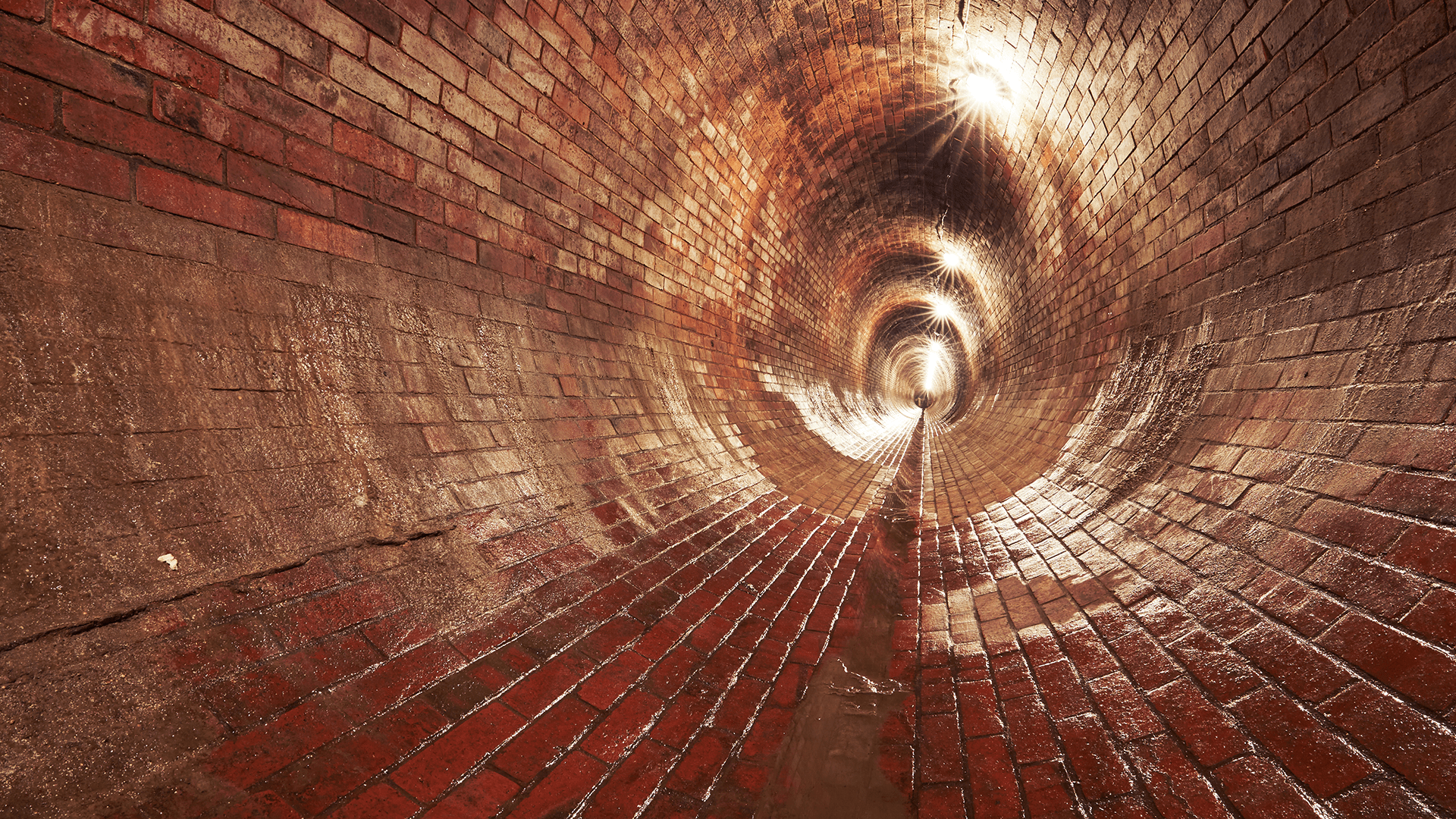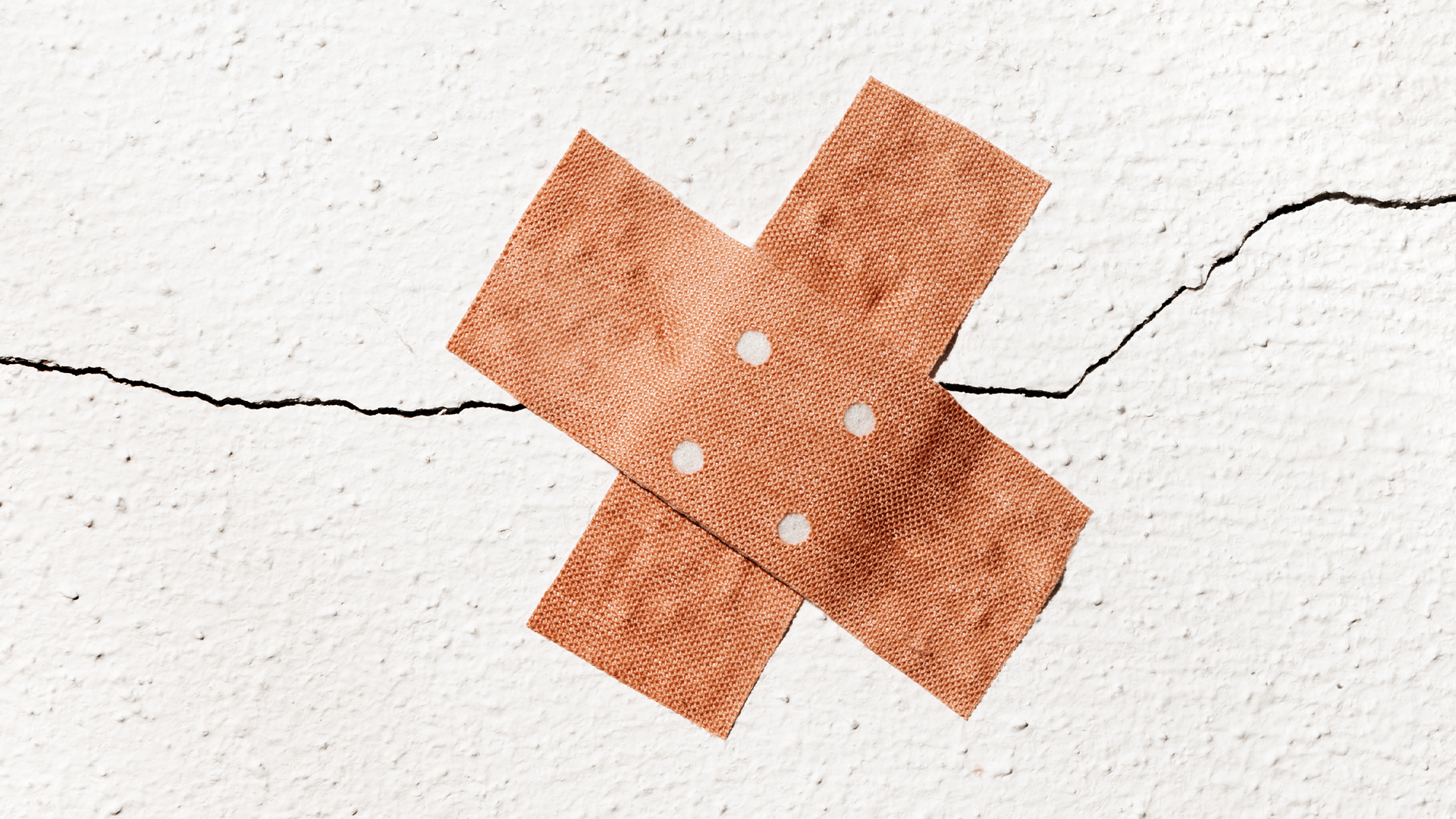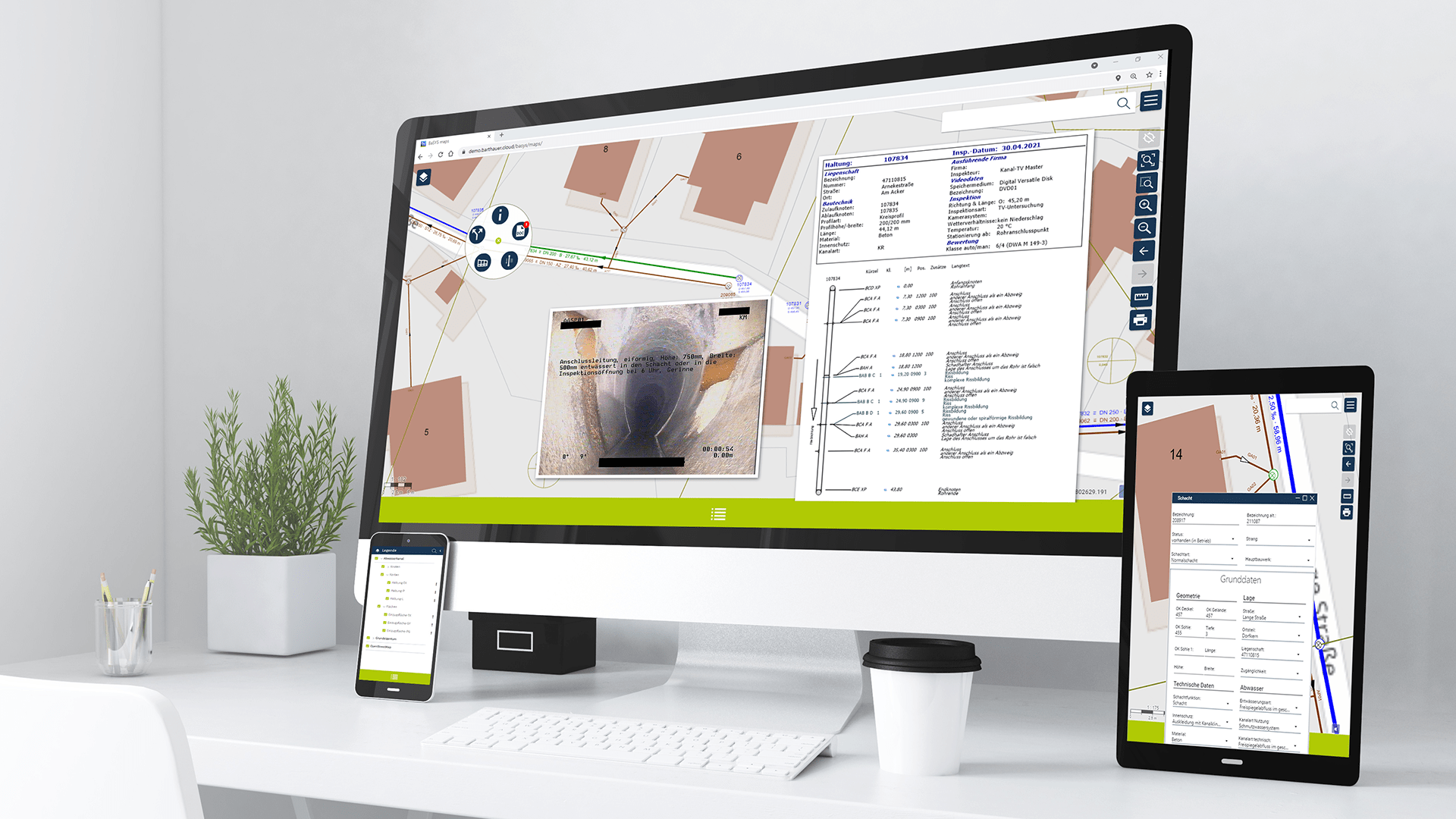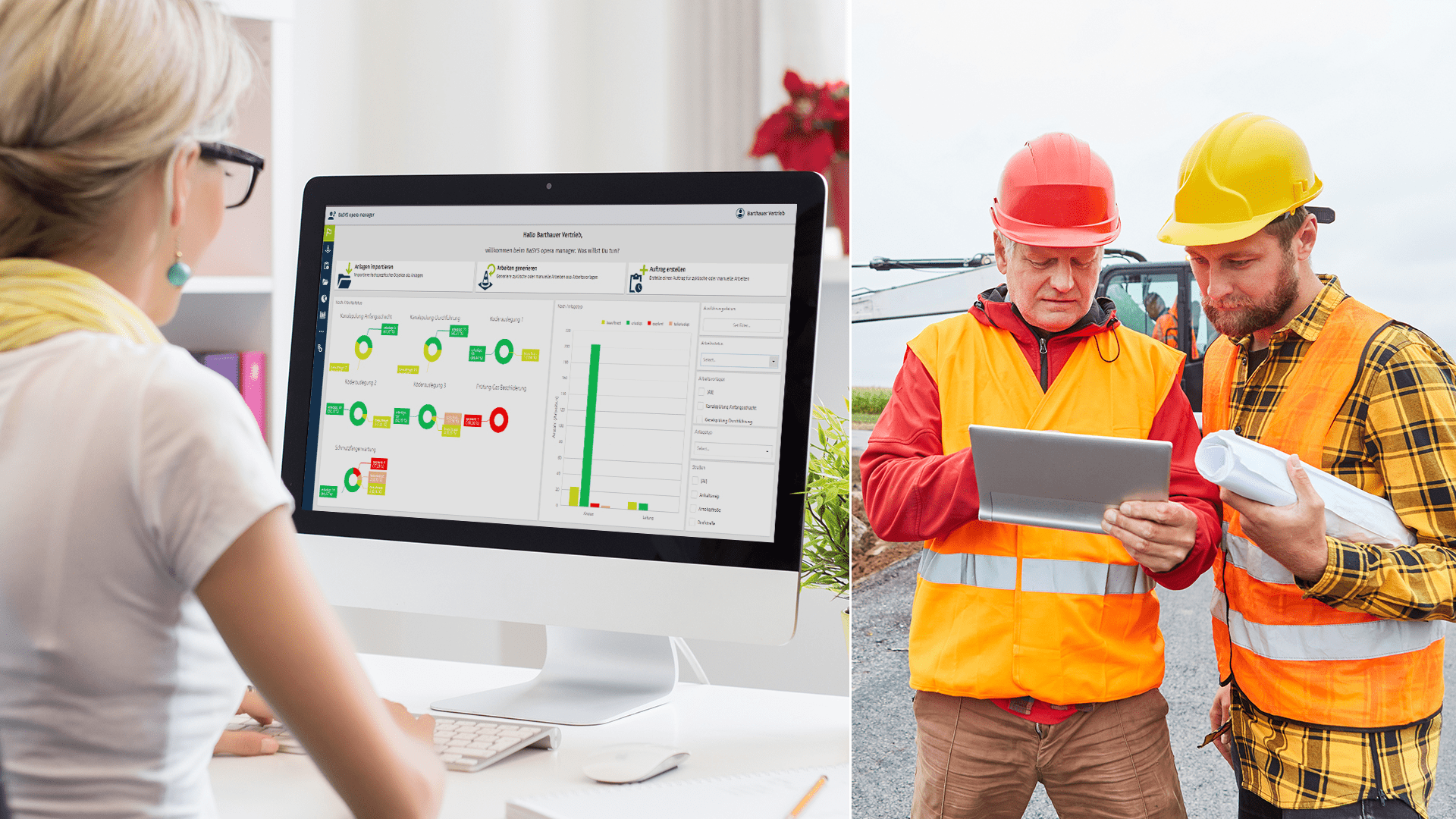Everyone who creates or uses ISYBAU XML data knows the problem: The new exchange format is much more flexible and can also transport the European standard DIN EN 13508-2. However, searching and editing individual data fields in an XML file is no longer as easy. This also makes it more difficult to check for an error-free XML format. This is where PIETS – the test software – can help. Barthauer Software GmbH has been involved in the development of the ISYBAU data exchange format for more than 15 years and was the first to transform the format into practical use.
PIETS has a three-stage structure: In addition to a structural and content check, PIETS also masters targeted editing, as well as the automatic conversion of other formats into the XML format. Data producers and data processors can thus perform a general format check and possible correction of individual files before each data import. For some, PIETS thus enables a quick quality control of the data supplier, for others a self-control to ensure the quality of their own work. “We designed PIETS as a tool to ensure interoperability between data formats. PIETS now not only supports ISYBAU – but is also available for DWA M 150 – formats,” says Anis Saad, production manager at BARTHAUER.
PIETS consists of the following modules: PIETS ISYTEST XML, PIETS Edit and PIETS Transformation ISYBAU.
PIETS ISYTEST XML tests XML files for both structural errors and content plausibility. This way, both client and contractor can be sure: Where ISYBAU is on it, ISYBAU is in it!
This could be your solution? Send us a message and we will get back to you:
PIETS Edit takes over the function of a text editor. Errors are directly addressed in the XML file and can then be corrected by the user.
With PIETS Transformation ISYBAU users have the possibility to convert files of the older ISYBAU formats like 01/96 or 06/01 into the XML format. This includes master data as well as hydraulic, condition and stormwater management data.
—
ISYTest checks each ISYBAU file for correctness of the ISYBAU exchange format with interactive correction possibility.
Target
Before sewer network data in ISYBAU format are imported into any sewer database, an ISYBAU format check should generally be performed. Only in this way a fast quality control of the data supplier or a self-test before delivery is possible.
Standards
The format check is based on the format descriptions of the “Arbeitshilfen Abwasser”. These were published as a so-called ISYBAU-oriented action plan by the Federal Ministry of Regional Planning, Building and Urban Affairs and the Federal Ministry of Defense.
All ISYBAU types of the formats of January 1996 ( 0196 ) and June 2001 ( 0601 ) are tested.
Everything at a glance
The user interface of ISYTEST is clearly arranged in the navigator in the following three views:
File content (interactive editor)
Error log (multifunctional)
Format description (display depending on the ISYBAU type of the file)
In this way, you have all the information for checking and revising the data immediately in view.
Navigator
You navigate between the imported ISYBAU files using a tree structure. Five predefined main groups allow a quick navigation:
Master data
Status data
Condition data hydraulics
Stormwater Management
Others (not identified by ISYTEST)
The files are automatically tested during import and subgrouped according to their exchange formats (type auto-identification based on file content). In the respective subgroup are:
the format description
associated ISYBAU files
The test status is automatically displayed for each tested file.
Error logs
A log is automatically generated for each tested ISYBAU file during the format check. The log entries are classified into the following three groups:
Error
Warning
Note
By clicking on a log entry, the cursor jumps directly to the corresponding location within the ISYBAU file. There you can check the file content and revise it if necessary. The error logs are alternatively displayed in print-ready HTML view and multifunctional tabular view. The content can be sorted according to various criteria. You can print each error log, export it to Office or copy it to another document.
Optimization of the test run
With the “Test only faulty files!” function, you automatically pick out from your file list the files that were detected as faulty in a previous test.
Test criteria:
The ISYBAU exchange formats are primarily examined on the basis of the following test criteria:
Syntax (e.g. incorrect arrangement of the individual records according to the required ISYBAU structure)
Consistency (e.g. wrong state abbreviations or selection list entries)
Redundancy (e.g. double naming of manholes with opposite information content)
Completeness per usage objective (e.g. missing numerical additions for condition assessment)
Quality (e.g. too high speed for TV inspection)
The test criteria are constantly updated as soon as changes result from the “Working aids waste water”.
–––
Everyone who works with data according to the DWA-M 150 format knows the problem: The new exchange format is much more flexible and can also transport the European standard DIN EN 13508-2. However, searching and editing individual data fields in a DWA-M 150 XML file is not as easy. This also makes it much more difficult to check for an error-free format. Barthauer Software GmbH offers the right solution for this: PIETS DWA.
In addition to structural checking, PIETS DWA is also capable of targeted editing. Data creators and data processors can thus perform a general format check and possible correction of individual files before each data import. For some, PIETS DWA thus enables rapid quality control of the data supplier, and for others, self-control to ensure the quality of their own work. PIETS DWA is designed as a tool to ensure interoperability between data formats.
PIETS DWA consists of the following modules: PIETS DWA Test and PIETS DWA Edit.
PIETS DWA Test checks files for structural errors in accordance with the DWA-M 150 standard. This means that both the client and the contractor are on the safe side.
PIETS Edit takes over the function of an intelligent text editor. Time-consuming searching for errors is no longer necessary. This is because PIETS Edit navigates directly to the erroneous entry.
PIETS
Everyone who creates or uses ISYBAU XML data knows the problem: The new exchange format is much more flexible and can also transport the European standard DIN EN 13508-2. However, searching and editing individual data fields in an XML file is no longer as easy. This also makes it more difficult to check for an error-free XML format. This is where PIETS – the test software – can help. Barthauer Software GmbH has been involved in the development of the ISYBAU data exchange format for more than 15 years and was the first to transform the format into practical use.
PIETS has a three-stage structure: In addition to a structural and content check, PIETS also masters targeted editing, as well as the automatic conversion of other formats into the XML format. Data producers and data processors can thus perform a general format check and possible correction of individual files before each data import. For some, PIETS thus enables a quick quality control of the data supplier, for others a self-control to ensure the quality of their own work. “We designed PIETS as a tool to ensure interoperability between data formats. PIETS now not only supports ISYBAU – but is also available for DWA M 150 – formats,” says Anis Saad, production manager at BARTHAUER.
PIETS consists of the following modules: PIETS ISYTEST XML, PIETS Edit and PIETS Transformation ISYBAU.
PIETS ISYTEST XML tests XML files for both structural errors and content plausibility. This way, both client and contractor can be sure: Where ISYBAU is on it, ISYBAU is in it!
This could be your solution? Send us a message and we will get back to you:
PIETS Edit takes over the function of a text editor. Errors are directly addressed in the XML file and can then be corrected by the user.
With PIETS Transformation ISYBAU users have the possibility to convert files of the older ISYBAU formats like 01/96 or 06/01 into the XML format. This includes master data as well as hydraulic, condition and stormwater management data.
—
ISYTest checks each ISYBAU file for correctness of the ISYBAU exchange format with interactive correction possibility.
Target
Before sewer network data in ISYBAU format are imported into any sewer database, an ISYBAU format check should generally be performed. Only in this way a fast quality control of the data supplier or a self-test before delivery is possible.
Standards
The format check is based on the format descriptions of the “Arbeitshilfen Abwasser”. These were published as a so-called ISYBAU-oriented action plan by the Federal Ministry of Regional Planning, Building and Urban Affairs and the Federal Ministry of Defense.
All ISYBAU types of the formats of January 1996 ( 0196 ) and June 2001 ( 0601 ) are tested.
Everything at a glance
The user interface of ISYTEST is clearly arranged in the navigator in the following three views:
File content (interactive editor)
Error log (multifunctional)
Format description (display depending on the ISYBAU type of the file)
In this way, you have all the information for checking and revising the data immediately in view.
Navigator
You navigate between the imported ISYBAU files using a tree structure. Five predefined main groups allow a quick navigation:
Master data
Status data
Condition data hydraulics
Stormwater Management
Others (not identified by ISYTEST)
The files are automatically tested during import and subgrouped according to their exchange formats (type auto-identification based on file content). In the respective subgroup are:
the format description
associated ISYBAU files
The test status is automatically displayed for each tested file.
Error logs
A log is automatically generated for each tested ISYBAU file during the format check. The log entries are classified into the following three groups:
Error
Warning
Note
By clicking on a log entry, the cursor jumps directly to the corresponding location within the ISYBAU file. There you can check the file content and revise it if necessary. The error logs are alternatively displayed in print-ready HTML view and multifunctional tabular view. The content can be sorted according to various criteria. You can print each error log, export it to Office or copy it to another document.
Optimization of the test run
With the “Test only faulty files!” function, you automatically pick out from your file list the files that were detected as faulty in a previous test.
Test criteria:
The ISYBAU exchange formats are primarily examined on the basis of the following test criteria:
Syntax (e.g. incorrect arrangement of the individual records according to the required ISYBAU structure)
Consistency (e.g. wrong state abbreviations or selection list entries)
Redundancy (e.g. double naming of manholes with opposite information content)
Completeness per usage objective (e.g. missing numerical additions for condition assessment)
Quality (e.g. too high speed for TV inspection)
The test criteria are constantly updated as soon as changes result from the “Working aids waste water”.
–––
Everyone who works with data according to the DWA-M 150 format knows the problem: The new exchange format is much more flexible and can also transport the European standard DIN EN 13508-2. However, searching and editing individual data fields in a DWA-M 150 XML file is not as easy. This also makes it much more difficult to check for an error-free format. Barthauer Software GmbH offers the right solution for this: PIETS DWA.
In addition to structural checking, PIETS DWA is also capable of targeted editing. Data creators and data processors can thus perform a general format check and possible correction of individual files before each data import. For some, PIETS DWA thus enables rapid quality control of the data supplier, and for others, self-control to ensure the quality of their own work. PIETS DWA is designed as a tool to ensure interoperability between data formats.
PIETS DWA consists of the following modules: PIETS DWA Test and PIETS DWA Edit.
PIETS DWA Test checks files for structural errors in accordance with the DWA-M 150 standard. This means that both the client and the contractor are on the safe side.
PIETS Edit takes over the function of an intelligent text editor. Time-consuming searching for errors is no longer necessary. This is because PIETS Edit navigates directly to the erroneous entry.
This could be your solution? Send us a message and we will get back to you:






















